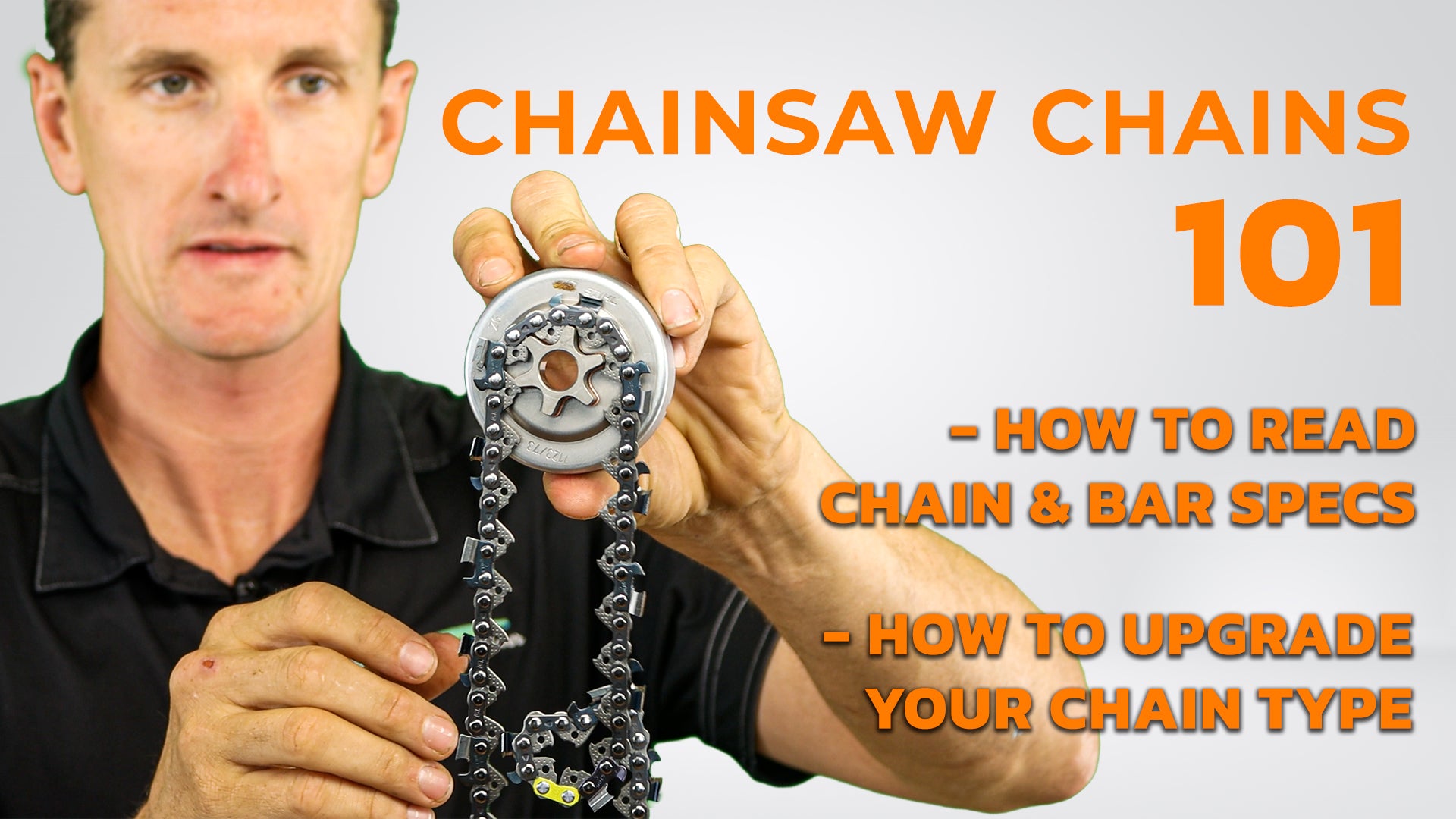Understanding Chain Saws: Bar, Chain, and Sprocket Essentials
If you own a chainsaw, you know that selecting the right chain is not always straightforward. It’s common for people to purchase a 16-inch chain at a hardware store only to find it doesn’t fit their saw. The complexity arises because even chains of the same length can vary significantly in shape, width, and spacing. This guide will clarify important terms like pitch, gauge, and drive links, and explain how to ensure you pick the right chain every time.
The Basics of Chainsaw Chains
Chainsaw bars and chains might seem similar, but the details matter significantly in their operation and efficiency. Here’s what you need to know:
Understanding Pitch
The pitch of a chain refers to the distance between its drive links, which are the teeth that slot into the chainsaw’s sprocket. Accurately measuring the pitch is crucial because a mismatch between the chain’s pitch and the sprocket’s size can lead to poor performance and increased wear. You usually measure the pitch from the midpoint of one rivet to the midpoint of the third rivet and divide that number by two.
Determining Gauge
Gauge is the thickness of the drive tooth that slots into the chainsaw bar’s groove. This must be matched precisely to ensure smooth operation and to avoid damaging the bar. Gauges can typically be measured using a caliper, but specialty tools are also available that make this task easier.
Counting Drive Links
Drive links are the individual links that lie within the bar’s groove. The total number of drive links needed depends on your chainsaw model and the size of the bar and sprocket. This information is often marked directly on the bar, and chainsaw manuals typically provide specifications for replacement parts.
Shopping for the Right Chain
When shopping for chainsaw chains, it’s essential to understand the part number breakdown found on most chains:
- The First Number: Indicates the part number of the bar itself.
- The Second Number: Displays the amount of drive links.
- The Third: Is the pitch.
- The Fourth: Provides the gauge of the chain.
Features of a Chain
Different chains not only have different physical dimensions but also different cutting characteristics. For example:
- Aggressiveness: Some chains are designed to cut more aggressively, which can be useful for tougher jobs but might increase wear or kickback.
- Safety Features: Some chains include design elements intended to reduce the risk of kickback, a common safety hazard with chainsaws.
Advanced Considerations
Adapting to Your Needs
If you want to enhance the performance of your chainsaw or adapt it for different tasks, you may need to consider changing more than just the chain. Sometimes an upgrade or a switch in parts like the bar or the sprocket is necessary.
Understanding Sprockets
The sprocket is a crucial component as it transfers the motor’s power to the chain. Over time, a worn-out sprocket can decrease your chainsaw’s efficiency and cause rapid chain wear. When replacing a sprocket, ensure that its pitch matches the chain’s pitch for optimal performance.
Customizing Chain and Bar
Customizing your chainsaw setup can improve cutting performance or adapt the tool for different types of wood or cutting conditions. Changing from a standard bar to a wider one or switching from a less aggressive chain to a more aggressive one can make a significant difference in how your saw performs.
Conclusion
Understanding the intricacies of chainsaw chains, bars, and sprockets is fundamental for both effective and safe operation. Next time you need to replace a chain or sprocket, refer to these guidelines to determine the correct specifications. By carefully selecting the right components tailored to your specific needs, you can significantly enhance the performance of your chainsaw and extend its lifespan. Always consult your chainsaw’s manual and follow manufacturer guidelines to ensure compatibility and safe operation.
Topics covered.
- Basic terms in chainsaw.
- Reading the Chainsaw Bar.
- What is Pitch?
- What is Gauge?
- Types of STIHL Chain packaging.
- History of STIHL Chains.
- Reading your Chain & Chain Box. Sprockets.
- Upgrading your Chain type.
- Types of Sprockets.
Check out more fun and informative videos on our YouTube Channel here:
https://www.youtube.com/@mainstreetmower
#chainsaw bar chain, #chainsaw chain, #chainsaw bar, #chainsaw sprocket, #chainsaw chain pitch, #chainsaw chain gauge, #chainsaw chain replacement, #chainsaw chain buying guide, #chainsaw chain drive links, #chainsaw chain maintenance, #chainsaw bar and chain, #chainsaw sprocket replacement, #chainsaw chain installation, #chainsaw chain types, #chainsaw chain selection

